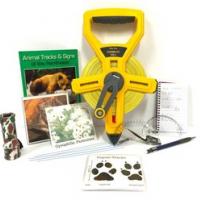Local Ecology Kit
Last updated on
Tuesday, December 27th, 2022Experience type:
Outreach BoxesProgram Description
This discovery kit is perfect for those teachers and students that are interested in learning more about the Kootenay-Boundary’s plant and animal life. The kit includes five activities based around identifying local plants and animals, invasive species, and indigenous use. You even figure out how to measure a tree with a straw! This kit is suitable for kindergarten to grade 7, with curriculum links to Social Studies, Science, and Mathematics.

Big Ideas
Additional Notes
No limit to number of students, subject to availability of activity materials






